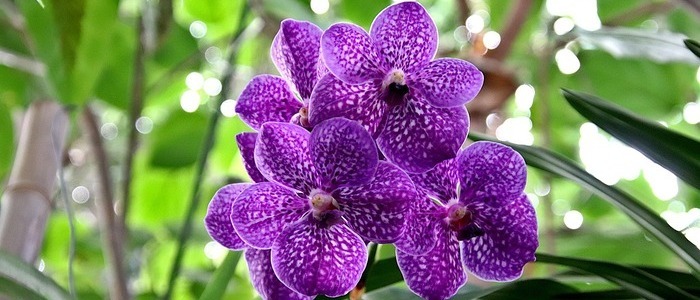Are you considering adding petunias to your garden? If you did welcome to our purple petunia plants care guide! We know that keeping your beautiful purple petunias looking their best can be a challenge. That’s why we created this easy-to-follow guide full of helpful tips and tricks. Here, you will find everything you need to know about caring for these gorgeous flowers, from planting to pruning and everything in between.
So, if you’re looking for a way to bring some bright color into your garden, you’ve come to the right place! Let’s get started!
We hope you enjoy learning about how to care for your purple petunias. Don’t forget to check back in regularly for updates and new tips.

Purple Petunia Plants Frequently Asked Questions
Are purple petunias houseplants?
While petunias can technically be grown indoors as houseplants, they are best suited for outdoor gardens where they can receive ample sunlight and fresh air. If you do choose to grow petunias indoors, make sure they are placed near a sunny window and receive enough water and nutrients to thrive. However, keep in mind that petunias can grow quite large and may require frequent pruning to prevent them from overtaking your indoor space.
Do petunias grow better in containers or in the ground?
Petunias can grow well in both containers and in the ground, but it ultimately depends on your personal preference and the space you have available. Container gardening can be a great option for those with limited outdoor space or for those who want to move their plants around to different locations. However, petunias grown in the ground may have more room to spread out and can potentially grow larger.
How to Care for the Purple Petunia Plants in Your Garden
If you’ve recently added a bit of color to your home garden with the addition of purple petunia plants, then it’s important that you know how to take proper care of them. Properly caring for purple petunias will ensure that they keep their vibrant color and bloom in full glory throughout the season!
Here are some tips for caring for your purple petunia plants:
1. Watering: Ensure that your purple petunias get enough water, but not too much! Water them slowly and deeply once or twice a week depending on the weather conditions. If you’re in an area with extreme temperatures, then you may need to increase the frequency of watering.
2. Soil: Purple petunias prefer a well-draining, nutrient-rich soil with a pH level of 6 to 7. If you’re unsure about your soil, then it’s best to get it tested before planting.
3. Fertilizer: For optimal growth, purple petunias need fertilizer every other feeding. Use a balanced formula with an NPK ratio of 10-10-10 and apply according to the instructions on the package.
4. Sunlight: Petunias love direct sunlight, so make sure that your plants are getting at least six hours of sun per day for the best results.
5. Pruning: Regularly deadhead your petunias to keep them blooming throughout the season. This will also help your plants maintain their shape and prevent diseases.
By following these steps, you can be sure that your purple petunia plants will stay healthy and look beautiful for many seasons!
Tips to Successfully Propagate the Purple Petunia Plant
Congratulations on your decision to propagate a purple petunia plant! Propagating plants is an excellent way to grow more of the same type of plant without having to purchase new ones. Here’s what you should know about successfully propagating the purple petunia:
1. Start by obtaining some cuttings from a healthy existing petunia plant. You’ll want to make sure the stems you select for propagation are healthy and not overly woody. Cut off the stem just below a node (where the leaf attaches to the stem).
2. Once your cutting is ready, prepare a pot or tray with a soil mix that is well-draining. Then take your cutting and dip the end into rooting hormone, which will encourage root growth.
3. Next, plant your cutting in the pot or tray, making sure the cut end is beneath the soil. Water lightly so that the soil stays moist but not soggy. Place the container in a warm location with plenty of light and mist regularly.
4. With the right conditions, roots should form in two to three weeks. Once your cutting has rooted, transplant it into a larger pot and begin caring for it as you would any other petunia plant.
It’s truly that simple! So don’t be intimidated; give propagating a purple petunia a try. With the right steps and patience, you can easily grow more of these beautiful blooms.
Pruning Your Purple Petunia Plant
Pruning is an essential part of keeping your plant healthy and happy. With just a few simple steps, you can be on your way to having a thriving garden full of beautiful, purple petunias.
First things first, it’s important to understand the right time to prune your petunias. Generally, a good rule of thumb is to wait until mid-spring or early summer for petunia pruning. This will give the plant enough time to recover and focus energy on producing new flowers and foliage instead of fighting off winter’s chill.
Once you’ve figured out when to prune, it’s important to remember that petunias are delicate plants and need gentle care. When pruning, use clean scissors or a sharp knife to cut off any dead leaves or stems that appear weak or damaged. Be sure not to remove more than about one-third of the overall plant in order to avoid stressing the plant.
Once you’ve pruned off any dead or damaged leaves, it’s time to give your purple petunias a good dose of fertilizer. A balanced, organic fertilizer is best for petunias and can help them produce healthy flowers and foliage. Make sure not to over-fertilize as this can damage the delicate petunia roots and cause too much growth.
Finally, it’s important to remember that after you prune your purple petunias, they will need plenty of water. For best results, give them a deep watering once a week and make sure not to forget about them in between waterings. If you follow these simple steps, you will have a thriving garden of beautiful purple petunias in no time!
Problems Found When Growing Purple Petunia Plants
Purple petunias are beautiful flowers that can add vibrant color to your garden. However, if you’re not careful, you can run into common issues when growing them. Here are some tips and tricks to help make sure that your purple petunia plants stay healthy and happy!
First of all, it’s important to choose the right soil for your purple petunia plants. Make sure you’re using soil that is rich in organic matter and drains well. If the soil is too heavy, the roots won’t be able to breathe and may rot. Additionally, avoid planting your petunias in overly sunny areas, as they prefer a bit of shade.
Another common problem is pests. One of the most common ones to watch out for with purple petunias is aphids. These small insects can damage your plants, so make sure you check for them regularly. If you do find any, try using an insecticidal soap or neem oil spray to get rid of them safely.
Finally, be sure to water your petunias regularly. If you let them dry out too much, the leaves will start to wilt and die off. Aim for about an inch of water per week, either from rainfall or by watering yourself. Make sure that your plants are getting enough light as well – they need at least six hours a day.
These are just a few tips for helping your purple petunias thrive. If you follow these guidelines, you should have no trouble keeping your plants healthy and happy! With the right care, you can enjoy their beautiful blooms all season long.
Conclusion
Gowning and caring for vibrant purple petunia plants may have seemed daunting at first, but if you followed the steps outlined in this blog post you can enjoy beautiful, healthy petunias. Not only will your petunia provide stunning color to your garden or home, but it will also reward you with years of enjoyment.
With the right attention and care, your petunia will continue to thrive for many seasons to come. Happy gardening!













